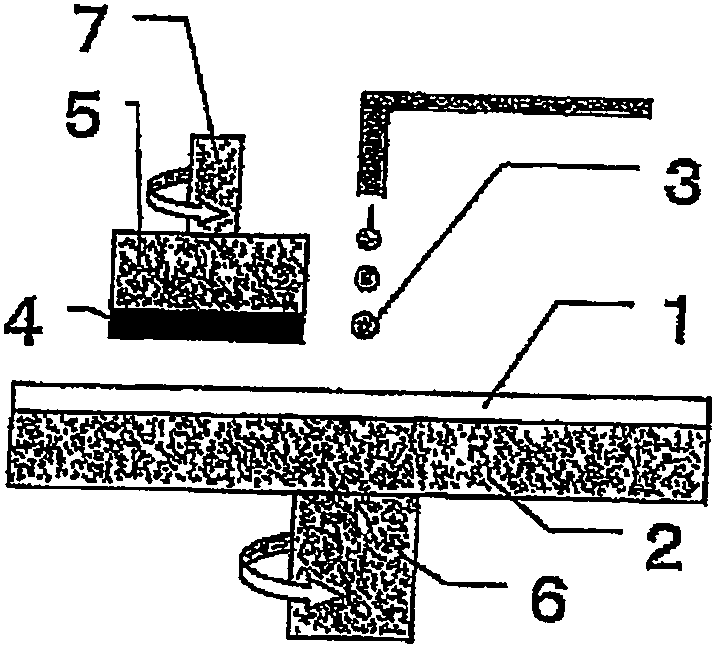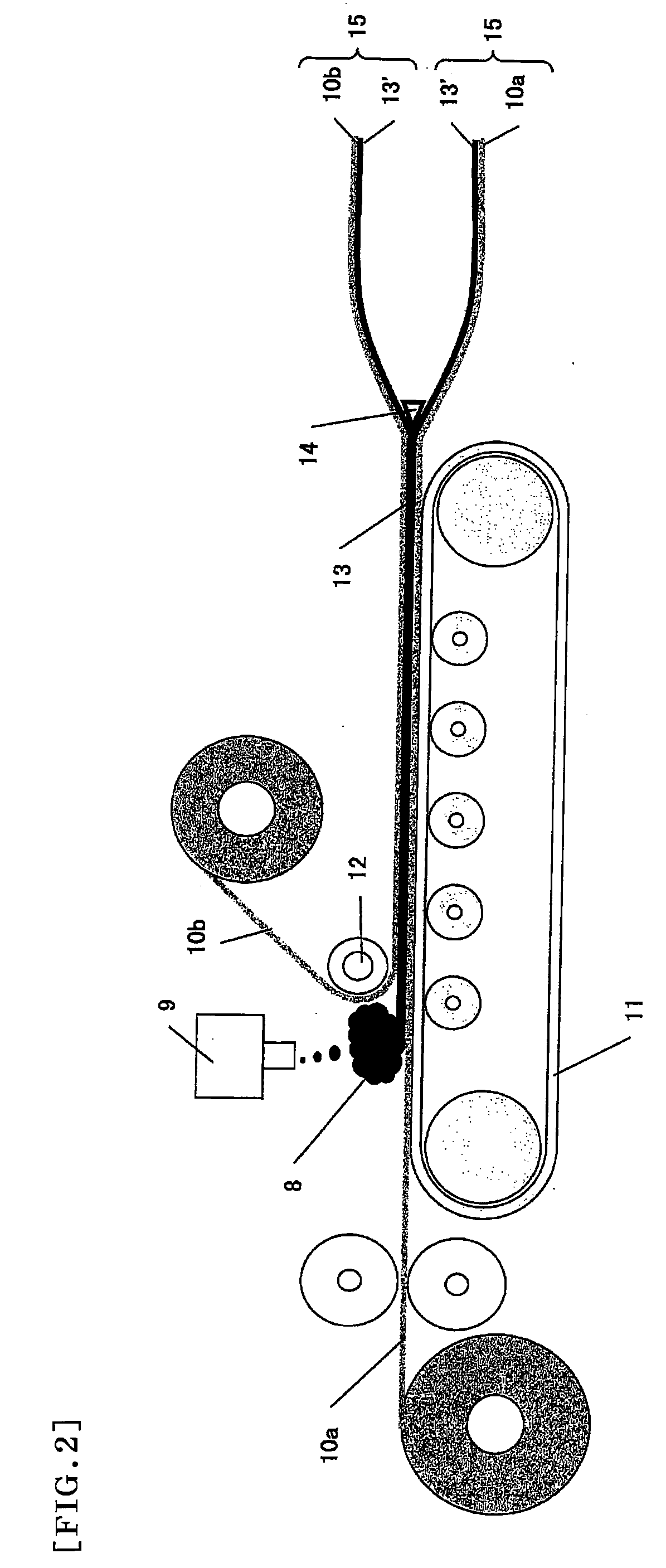Method for manufacturing polishing pad
a polishing pad and manufacturing method technology, applied in the direction of manufacturing tools, grinding devices, chemistry apparatus and processes, etc., can solve the problems of low productivity, large number of production steps, low productivity, etc., and achieve high productivity, high productivity, and manufacture a polishing pad
- Summary
- Abstract
- Description
- Claims
- Application Information
AI Technical Summary
Benefits of technology
Problems solved by technology
Method used
Image
Examples
preparation example 1
[0183]32 parts by weight of toluene diisocyanate (a mixture of 2,4-diisocyanate / 2,6-diisocyanate=80 / 20), 8 parts by weight of 4,4′-dicyclohexylmethane diisocyanate, 54 parts by weight of polytetramethylene glycol (number average molecular weight: 1006), and 6 parts by weight of diethylene glycol were mixed, and stirred and heated at 80° C. for 120 minutes so that an isocyanate-terminated prepolymer (2.1 meq / g in isocyanate equivalent) was prepared. 100 parts by weight of the isocyanate-terminated prepolymer and 3 parts by weight of a silicone surfactant (SH-192, manufactured by Dow Corning Toray Co., Ltd.) were mixed to prepare a mixture A which was controlled to have a temperature of 80° C. In a mixing chamber, 80 parts by weight of the mixture A and 20 parts by weigh of 4,4′-methylenebis(o-chloroaniline) (Iharacuamine MT, manufactured by Ihara Chemical Industry Co., Ltd.) melted at 120° C. were mixed, and at the same time, air was dispersed into the mixture by mechanical stirring ...
preparation example 2
[0186]To a vessel were added 45 parts by weight of POP36 / 28 (polymer polyol, 28 mg KOH / g in hydroxyl value, manufactured by Mitsui Chemicals, Inc.), 40 parts by weight of ED-37A (polyether polyol, 38 mg KOH / g in hydroxyl value, manufactured by Mitsui Chemicals, Inc.), 10 parts by weight of PCL305 (polyester polyol, 305 mg KOH / g in hydroxyl value, manufactured by Daisel Chemical Industries, Ltd.), 5 parts by weight of diethylene glycol, 5.5 parts by weight of a silicone surfactant (SH-192, manufactured by Dow Corning Toray Co., Ltd.), and 0.25 parts by weight of a catalyst (No. 25, manufactured by Kao Corporation) and mixed. The reaction system was vigorously stirred for about 4 minutes with a stirring blade at a rotational speed of 900 rpm such that air bubbles were incorporated into the reaction system. Thereafter, 31.57 parts by weight of Millionate MTL (manufactured by Nippon Polyurethane Industry Co., Ltd.) was added, and the mixture was stirred for about 1 minute to give a cell...
preparation example
[0189]32 parts by weight of toluene diisocyanate (a mixture of 2,4-diisocyanate / 2,6-diisocyanate=80 / 20), 8 parts by weight of 4,4′-dicyclohexylmethane diisocyanate, 54 parts by weight of polytetramethylene glycol (number average molecular weight: 1006), and 6 parts by weight of diethylene glycol were mixed, and stirred and heated at 80° C. for 120 minutes so that an isocyanate-terminated prepolymer (2.1 meq / g in isocyanate equivalent) was prepared. 100 parts by weight of the isocyanate-terminated prepolymer and 3 parts by weight of a silicone surfactant (SH-192, manufactured by Dow Corning Toray Co., Ltd.) were mixed to prepare a mixture A which was controlled to have a temperature of 80° C. In a mixing chamber, 80 parts by weight of the mixture A and 20 parts by weigh of 4,4′-methylenebis(o-chloroaniline) (Iharacuamine MT, manufactured by Ihara Chemical Industry Co., Ltd.) melted at 120° C. were mixed, and at the same time, air was dispersed into the mixture by mechanical stirring ...
PUM
| Property | Measurement | Unit |
|---|---|---|
| Viscosity | aaaaa | aaaaa |
| Viscosity | aaaaa | aaaaa |
| Wavelength | aaaaa | aaaaa |
Abstract
Description
Claims
Application Information
 Login to View More
Login to View More - R&D
- Intellectual Property
- Life Sciences
- Materials
- Tech Scout
- Unparalleled Data Quality
- Higher Quality Content
- 60% Fewer Hallucinations
Browse by: Latest US Patents, China's latest patents, Technical Efficacy Thesaurus, Application Domain, Technology Topic, Popular Technical Reports.
© 2025 PatSnap. All rights reserved.Legal|Privacy policy|Modern Slavery Act Transparency Statement|Sitemap|About US| Contact US: help@patsnap.com



